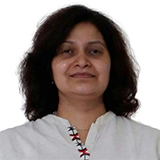buy generic sinequan from india no prescription

The bone marrow in a healthy child will produce blood stem cells that mature into myeloid stem cells or lymphoid stem cells. A myeloid stem cell will produce red blood cells, white blood cells, where to buy cheap exelon online pharmacy without prescription and platelets. A lymphoid stem cell will mature into a lymphoblastic cell that is converted into B lymphocytes, T lymphocytes, and nature killer cells that attack viruses and cancer cells.
Salient Facts about Childhood Acute Lymphoblastic Leukemia
Childhood acute lymphoblastic leukemia or ALL is a disorder in which a large number of stem cells become lymphoblastic cells. This leads to excessive production of B lymphocytes, T lymphocytes, and natural killer cells. They are called cancer cells or leukemia cells. They don’t work as well as regular lymphocytes against infections.
An additional complication is that as the leukemia cells grow in number there is a decrease in the number of red blood cells, white blood cells, and platelets. The combination of inadequate lymphocyte cells and lack of white blood cells makes the children more susceptible to infection, anemia, and hemorrhage.
Symptoms of Childhood Acute Lymphoblastic Leukemia
There are a number of signs that a child with ALL may exhibit. It is important for parents to monitor their ward carefully if they display any or all of these symptoms.
- Fever, which is indicative of an infection in the system
- Easy bruising or bleeding from wounds
- Dark red spots seen under the skin caused by internal bleeding, also called Petechiae
- Pain in joint or bone for no apparent reason
- Lumps formed in the neck, underarm, stomach, or groin area, which are painless
- Child is easy to fatigue with minimal exertion
- Appetite of child is severely reduced
- Paleness of skin
- Night sweats despite ambient sleeping conditions
Causes of Childhood Acute Lymphoblastic Leukemia
Research is still being conducted into the possible causes for childhood acute lymphoblastic leukemia. It is not infectious and may not be passed on to family members and care givers. However, there is a genetic inheritance pattern. Families having history of Down syndrome, neurofibromatosis type 1, Shwachman syndrome, Bloom syndrome, and ataxia telangiectasia are likely to be more at risk for childhood ALL.
Risk factors that may increase the chance of a child developing childhood acute lymphoblastic leukemia include being exposed to X-rays before birth And having been treated with chemotheraphy and even exposure to radiation in general. There is no exact cause that can be pinpointed that triggers the onset of the condition.
Diagnosis for the Disorder
A number of tests may be performed to diagnose childhood acute lymphoblastic leukemia. They will also serve to check how far leukemia cells have spread in the body. These include:
Physical Examination and History of Health: In this clinical examination of the patient, the doctor will look out for lumps in the body, signs of bruising on the skin, dark spots indicating bleeding under the skins, and any other unusual visible sign. Family history and patient’s health history will be examined.
Complete Blood Count with Differential: A blood test to determine the number of red blood cells, white blood cells, and platelets in the sample. It will also check for the hemoglobin in the red blood cells as well as the portion of the sample made up of RBCs.
Bone Marrow Aspiration and Biopsy: This includes removing bone marrow from a bone by inserting a hollow needle into the hip or breast bone. The bone marrow is then examined to check for signs of cancer.
Lumbar Puncture: is done by inserting a needle between two bones in the spine and withdrawing a sample of cerebrospinal fluid from the spinal column. This fluid is then studied for signs of leukemia cells. The process is also called spinal tap.
Treatment Options for Childhood ALL
Treatment involves correcting the imbalance and getting the blood counts back to normal. Treatment options will depend on a number of factors such as age of the child, detection of leukemia cells in different parts of the body such as spinal column, detection of changes in the chromosomes of the lyphocytes, whether the child has Down syndrome, weight of child during diagnosis, etc.
Primary treatment will consist of chemotherapy to send the cancerous leukemia cells into remission. Bone marrow or stem cell transplant from a healthy donor may be required. Cranial radiotheraphy may be prescribed for the brain. Treatment will depend on child’s exact condition and a number of side effects such as hair loss, nausea, loss of appetite, weight reduction, mood swings, and muscle weakness can be expected.
Prognosis for Patients with Childhood Acute Lymphoblastic Leukemia
The outlook post treatment is positive. Most children with childhood ALL are cured. There are few long-term side effects and children are able to develop normally. Once cancer goes into remission and does not reoccur for the first three years, the prognosis is excellent.
References
- https://www.cancer.gov/types/leukemia/patient/child-all-treatment-pdq
- http://www.macmillan.org.uk/cancerinformation/cancertypes/childrenscancers/typesofchildrenscancers/acutelymphoblasticleukaemia.aspx
- https://medlineplus.gov/ency/article/000541.htm
- http://www.cancer.org/cancer/leukemiainchildren/detailedguide/childhood-leukemia-what-is-childhood-leukemia
- http://www.cancer.org/cancer/leukemiainchildren/detailedguide/childhood-leukemia-prognostic-factors
Further Reading
- All Acute Lymphoblastic Leukemia Content
- What is Acute Lymphoblastic Leukemia?
- Acute Lymphoblastic Leukemia Symptoms
- Acute Lymphoblastic Leukemia Diagnosis
- Acute Lymphoblastic Leukemia Pathophysiology
Last Updated: Feb 26, 2019

Written by
Cashmere Lashkari
Cashmere graduated from Nowrosjee Wadia College, Pune with distinction in English Honours with Psychology. She went on to gain two post graduations in Public Relations and Human Resource Training and Development. She has worked as a content writer for nearly two decades. Occasionally she conducts workshops for students and adults on persona enhancement, stress management, and law of attraction.
Source: Read Full Article